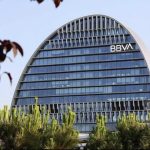How to industrialise Angola?
Angola’s industrialisation has become one of the main goals of the current government under the leadership of the President of the Republic João Lourenço.
www.cedesa.pt
The Angolan industrial first impulse began in the 1960s, still under colonial rule. In fact, at that time it was framed in the general liberalisation and pro-European measures that Portugal adopted, with the creation of a Portuguese free trade zone and the expansion of the internal market based on the troops and families displaced by the colonial war between 1960 and 1970, the gross value of manufacturing industry production grew at an average annual rate of 17.8% and GDP 10%.
Therefore, on the eve of independence (1973), Angolan industry (excluding civil construction) represented 41% of GDP. The important industries were the food industry, with 36% of the gross value of production in the manufacturing sector; followed by the textile industry, with 32%, beverages, with 11%, chemistry, non-metallic mineral products and tobacco, with 5%, oil derivatives and metallic products, with 4%, pulp, paper and derivatives, with 3%. The manufacturing industry’s GPV grew at an average annual rate of 21% between 1970 and 1973.
The country’s industrial prosperity was interrupted by the civil war (1975-2002) and it was only after 2002 that there was a strong revival of the economy. However, this restart was based just on oil exploration and not on any sustained industrialisation process. Even when it comes to oil, there was no concern to integrate it in an industrialisation process and make Angola a country that would focus on transforming its raw materials instead of exporting raw products.
In the second decade of the 21st century, Angola’s economic situation was worrying as oil exploration in largely mono-product economy was no longer such a viable option due to the drop in oil prices. In this context, the government started discussing the diversification of the economy and looking at industry as a possible way out. However, the scenario is not encouraging since industry is weak in terms of Angolan Gross Domestic Product (GDP). The most recent data referring to the weight of the manufacturing industry (except crude oil refining) dating from the second quarter of 2020 point to a rather lacklustre 4.8% contribution to GDP. This contribution was 3.69% in 2002, and 4% in 2017 and 2018. On the same date, the year-on-year change in the manufacturing industry had been – 4%. The Gross Added Value was also negligible.
Any project to relaunch Angola’s industry must start promoting the right context. This context is a free economy with a social climate conducive to investment. The social climate is based on six necessary assumptions:
i) Reduced corruption. Corruption distorts the rules of economic competition and prevents free access to markets, fundamental conditions for industrial development;
ii) No barriers to market access. Entrepreneurs must be free and unfettered to choose their production factors;
iii) Functional Justice System. The justice system should not be corrupt, slow and incompetent, but should be seen to be working and enforcing and upholding the law, punishing those who do not comply with contracts as well as having the legal framework and competencies for debt collection;
iv) Reasonable taxes. Taxes should tend to be moderate and not stifle productive activity;
v) Red tape. Public administration must be pro-business and must not create administrative bureaucratic barriers to the setting up and running of companies.
vi) Pro-business state. The State must have a fostering and proactive role in industrialisation, setting guidelines, targets and directional policies, building infrastructure, educating and training the workforce and establishing partnerships.
Given the context, the important thing is to highlight areas where efforts need to be directed in the drive for industrial growth.
We observe four areas of industrialisation in Angola. These areas have been chosen taking into consideration Angola’s economic history, wealth and potential, the experiences of global industrialisation and possible trends of the markets in the coming decades.
We therefore propose an industrial development according to the following points that can be interconnected or complementary:
1-Agriculture;
2-Basic needs industries;
3-Industries of development of natural wealth;
4-The Future: renewable energy and digitalisation.
1-Agriculture
The agricultural sector represents the natural development of Angola’s potential which is already in operation and which was the subject of our previous report.
Just look at a small example to gauge the potential. Recently, it was reported that Angola has been the main banana producer in Africa for six consecutive years. According to the Food and Agriculture Organisation of the United Nations (FAO) Angola is the largest African banana producer and the seventh in the world with an offer of 4.4 million tons.
It is easy to understand that the creation of an industrial production line based on bananas: fruit juices (beverage industry), medicinal products / potassium (chemical / pharmaceutical industry), etc., are just some of the possibilities for the refrigeration or pharmaceutical industry regarding bananas.
The same type of reasoning can be applied to products and natural resources that Angola has or exploits in abundance. By internally transforming its natural resources and products, the country adds value to them, ceasing to be slave to the fluctuations in the world price of raw materials.
2-Basic needs industries
Basic needs mean food, clothing and housing. This industrial area represents an industry in which no specific technical sophistication is required, and import substitutions can be made without specific losses in competitiveness, in addition to making it possible to create export markets in similar countries. In addition, Angola has already had a reasonable industry in the area of food, beverages and textiles. With a market of 30 million people that can easily be extended to many millions more with the developments of the Southern African Community (SADC) and the African Free Trade Area, Angola has enough potential demand for essential products: clothing, shoes, houses (obviously), basic food products from yoghurts to beers. There is no reason not to create its own industry with its own brands, in many cases imitating what has been done successfully in these sectors in countries like Bangladesh and Vietnam.
3-Natural wealth development industries
Another industrial area focuses on national wealth other than agricultural. It has all the logic and economic rationality to use and transform what Angola already has, adding value to it instead of exporting it in gross terms and giving away all the capital gains to others. Oil is the most obvious example. It makes sense to develop the industries downstream from oil: refining, petrochemicals, plastics, fertilisers, etc. As United Nations expert Carlos Lopes said, “The question is clear: it is not turning your back on wealth, such as oil, but integrating it into the transformation of the economy and making Angola a country that invests in the transformation of its raw material into byproducts, instead of exporting it as a gross commodity. This means investing, in addition to refining, in petrochemicals, fertiliser production, etc. ”
4-Future: renewable and digital energies
The final area is connected to renewable energies and the digital transition. It is now a given that there is a demand for the replacement of oil by clean and renewable energies. In the United Kingdom, the goal to end the circulation of gasoline or diesel cars within 10 years was announced. Electricity generated by renewable energies looks to be the future Large oil companies like BP or Aramco are transforming or embracing these areas. Now Angola has excellent natural conditions for this investment in renewable energies: Solar energy in particular. An industrial niche around solar energy and electricity production would be worth considering as a serious investment.
From the point of view of digital transition, Angola will be able to make an important qualitative leap using digital techniques for the development of applications for mass basic and secondary education, basic health and in the financial area. Here we have an industry of digital applications for teaching, health and banking that could be developed in Angola by Angolans, immediately combining synergies between health and education and digital industrialisation.
On the part of the State, there must be a commitment to this project that will essentially be the responsibility of the private sector. However, the State must create the legal and institutional framework, prepare financial and fiscal incentives, build infrastructure, promote the training of agents capable of change and establish partnerships.
Data from Banco Nacional de Angola in https://www.bna.ao/Conteudos/Temas/lista_temas.aspx?idc=841&idsc=15907&idl=1
 https://www.cedesa.pt/2020/06/15/plano-agro-pecuario-de-angola-diversificar-para-o-novo-petroleo-de-angola/  https://www.angonoticias.com/Artigos/item/66803/angola-e-o-maior-produtor-de-banana-em-africa-ha-seis-anos










